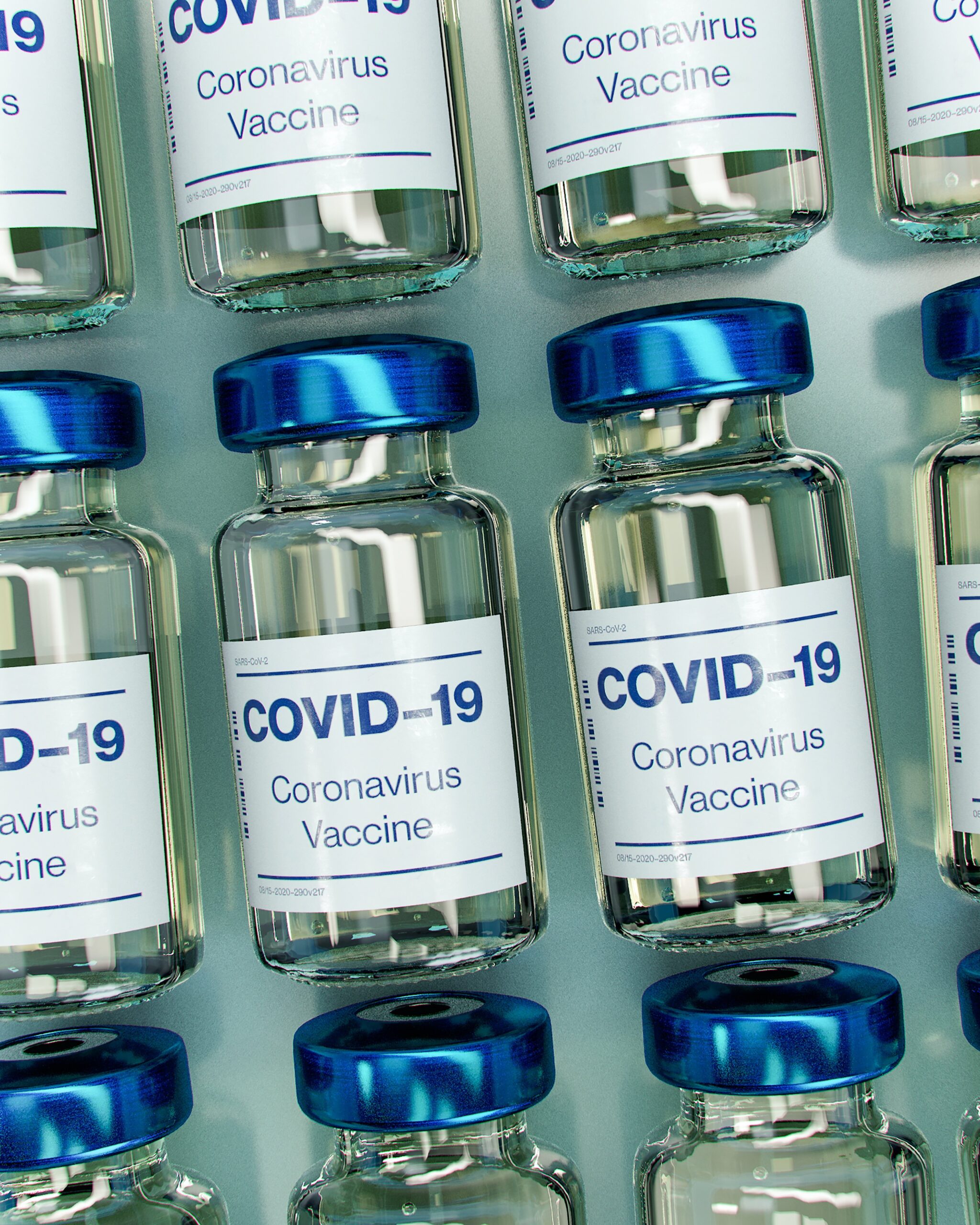
COVID-19 Vaccine
Photo by Daniel Schludi on Unsplash
These will be the fastest vaccines ever developed, by a margin of years. The next fastest vaccine ever approved for public use was the mumps vaccine, and that took 4 years.
Unfortunately, that speed has made a lot of people nervous. Will the vaccine be safe? Are they skipping steps? How is this process moving so fast?
According to Pew Research, 77% of Americans think it’s very or somewhat likely a COVID-19 vaccine will be approved in the United States before its safety and effectiveness are fully understood.
But regardless of the fear and doubt, we need a vaccine. We are now losing over 2,000 American lives per day to COVID-19. Numerous health experts have warned that this pandemic will not truly be over until we have a vaccinated population.
Part of the fear is related to the mystery surrounding the process of vaccine creation. Almost no one who isn’t integrally involved in vaccine development understands how long it takes to create a vaccine or why it takes so long. So to most Americans speed doesn’t seem like a feat of modern science, it seems like cutting corners. Here are all the (genuinely not scary) reasons why this vaccine is being developed so much faster than any in history.
Operation Warp Speed
Operation Warp Speed (OWS) is a coordinated government effort to defeat this virus as quickly as possible. It is a partnership between the Department of Defense and the Department of Health and Human services to make resources available to the private companies involved in creating vaccines, testing, and therapeutics for COVID-19. In practice, OWS has focused primarily on the creation of vaccines and has already spent billions ensuring that the vaccine development, manufacturing, and distribution process can move as efficiently as possible.
The US program is bankrolling the development and production of six promising coronavirus vaccine candidates. This has already sped up the process significantly and will likely play an even larger role in the manufacturing process. Medical research of any kind often moves slowly because it’s expensive and risky.
Funding is hard to secure, because in order to prove a vaccine is successful (and therefore profitable) you have to have tests, and to do tests, you need money. It’s sort of a catch-22 that is only ended when someone decides to make a risky bet.
Betting on vaccines is risky, because if it ends up being unsuccessful (the majority of vaccines never make it to market), that money is just gone. The US government chose to take the gamble.
The US has spent $10 billion through OWS on the most promising vaccine candidates, ensuring they don’t have to wait for private funding to move through each phase of the process.
Combining Steps
Many people are concerned that these drug companies are skipping steps in the race to create a vaccine, but what’s happening is that multiple steps in the process are being done simultaneously.
Steps that are usually done sequentially are being done at the same time. For example, some labs are running combined Phase 1 and Phase 2 human trials or having vaccine development manufacturing facilities ready even before a vaccine is finalized. This increases the financial risk, but not the product risk.
Typically, clinical trials set up their own independent panels of scientists, known as a data safety monitoring board or DSMB, to watch out for safety concerns or early signs of success. But all of the vaccine trials in Operation Warp Speed are sharing a common DSMB. This allows the DSMB to review the data from all the trials from the various vaccines concurrently. That shared data expedites the process and quickly identifies which vaccines are effective and which aren’t without wasting time and resources.
Saad Omer, director of the Yale Institute of Global Health, explains that this is not a huge difference. “There’s really just a subtle difference in how the trials are run. If the trials were separate, you would publish the full data, and then recruit a new set of participants. For a combined trial, the data and safety monitoring board would look at the interim data and determine whether it’s still worth continuing the trial.” This continuous monitoring cuts the inefficiencies out of the process without changing the safety standards.
Years of Prior Research
The research stage of vaccine development is often one of the longest. The College of Physicians of Philadelphia states that this exploratory phase “often lasts 2-4 years.” Thankfully, much of the research needed for the COVID-19 vaccine had already been done before the novel coronavirus even appeared.
The term “coronavirus” includes a family of several known viruses that cause respiratory tract illnesses that range from the common cold to such potentially deadly illnesses as severe acute respiratory syndrome (SARS), which killed almost 800 people during an epidemic that occurred in 2002 and 2003. After the SARS outbreak, research on coronaviruses increased significantly. So when SARS-Cov-2 or COVID-19 appeared, vaccine work on some of its relatives had already been underway. This gave scientists a significant head start.
Another way in which scientists weren’t exactly starting from scratch on this vaccine is thanks to the messenger RNA or mRNA technology. mRNA technology is a completely new vaccine technology that is being used in both the Pfizer/BioNTech vaccine and the Moderna vaccine. Both the Pfizer/BioNTech and Moderna vaccine use mRNA to trigger the immune system to produce protective antibodies without using actual samples of the virus.
While this mRNA science hasn’t created a successful vaccine before now, the ideas behind an mRNA vaccine have been studied and tested extensively for over 30 years.
In the natural world, the body relies on millions of tiny proteins to keep itself alive and healthy, and it uses mRNA to tell cells which proteins to make. The concept behind an mRNA vaccine is simple: If you can design your own synthetic mRNA, you could tell the body to create whatever proteins you want, including antibodies to vaccinate against infection.
Messenger RNA vaccines are a game-changer in terms of speed. The mRNA vaccines produced by Pfizer/BioNTech and Moderna are faster to develop as they don’t require companies to produce protein or weakened pathogens for the vaccine.
Traditional vaccines typically use a weakened version of the disease or a protein piece of it, but because these are grown in eggs or cells, developing and manufacturing vaccines takes a long time. In contrast, the genetic material mRNA is efficient to make, and highly customizable.
Short but Large Phase 3
When a new vaccine is tested on humans, it is tested in three phases. Each phase increases in size and scope. The length of study for phase 3 clinical trials is usually 1 to 4 years and normally involves 300 to 3,000 patients.
COVID-19 is killing over 2,000 Americans a day, so we don’t have time to wait for a lengthy trial. To resolve this issue, they have increased the trial size significantly. Pfizer’s phase 3 trial had 43,000 volunteers, and Moderna’s had 30,000.
These are what are called “event-driven trials.” Basically an event in this case is when one of the volunteers gets sick with COVID-19. Once a trial reaches a previously decided on number of events, they check how many of the people that got sick were given the real vaccine and how many were given the placebo. This shows how effective the vaccine was.
The incredibly large trial size and the prevalence of the disease has allowed the “events” to occur quickly, making it easy to test the efficacy of the vaccine. Normally clinical trials can be held back by low volunteer numbers and low disease prevalence. However, COVID-19 spreads rapidly and pretty much all adults seem to be susceptible, which makes these problems irrelevant.
The only downside of a shorter but larger trial is that you don’t get to see what long-term effects the vaccine will have. But scientists agree that the chances of long-term complications are extremely unlikely because of how vaccines work. Deborah Fuller, Ph.D, who is a vaccine scientist with UW Medicine, explains, “Most of their job is done in the first few days, then the vaccine is gone from your body. So what’s left is that immune response to the vaccine.”
Emergency Use Authorization
At the end of the vaccine making process, when the trials are finished and the research is done, companies submit a Biologics License Application (BLA) to the FDA. The BLA usually takes about a year to gain approval. To speed up the process, COVID-19 vaccines are seeking an Emergency Use Authorization (EUA) before they are even done collecting data.
Under an EUA, a company can produce and distribute a vaccine that hasn’t officially been approved. This is a process meant for one purpose: to save lives. The FDA will only grant an EUA if they believe that the expected benefits outweigh the possible risks of the vaccine.
Early in the pandemic, the FDA issued a list of requirements they would need from a company before they would consider issuing an EUA for a vaccine. Those guidelines included information about how many people had to be involved in trials, how long the follow up with them had to be, and what information had to be included in their reports.
To ensure that this EUA isn’t about cutting corners, the FDA has appointed an independent advisory board to aid them in their decision about the vaccine. On Thursday this week the FDA is scheduled to convene a meeting of that advisory board, known as VRBPAC, to review Pfizer’s Covid-19 vaccine for emergency use authorization.
This vaccine is coming, and it’s coming quickly. At first that might seem scary, but in reality it’s just a perfect confluence of events that have allowed scientific minds to do the impossible. Operation Warp Speed, years of usable research, combining steps, a differently designed phase 3, and emergency use authorizations have all come together to create the perfect situation to make a safe and effective vaccine—in record time.
For more well-researched, unbiased information on today’s biggest issues, follow Alexandra’s Instagram account The Factivists.
- A Healthcare Professional’s Thoughts on Coronavirus Epidemic … ›
- The Wildest Online Conspiracy Theories About the Coronavirus: Is … ›














